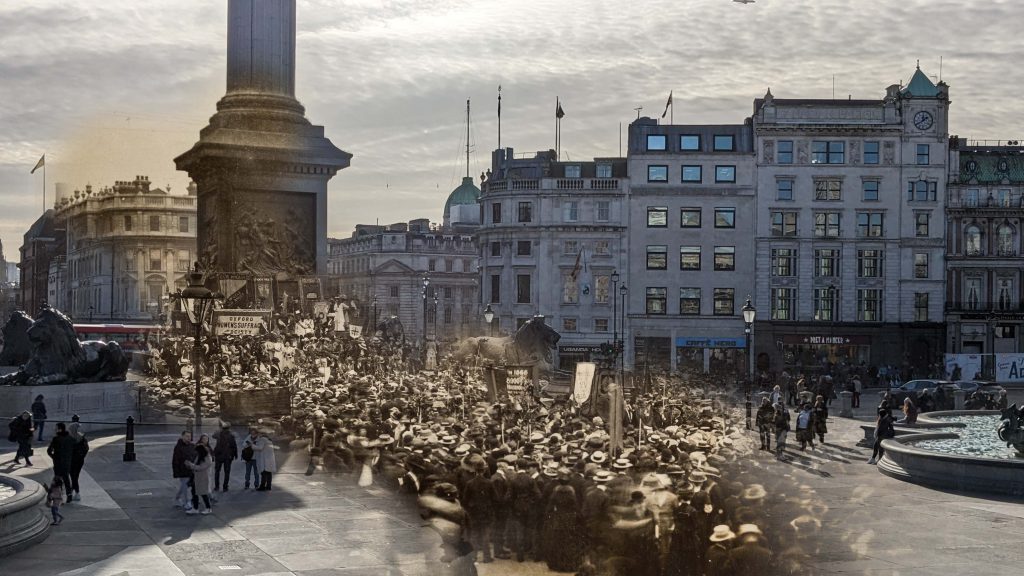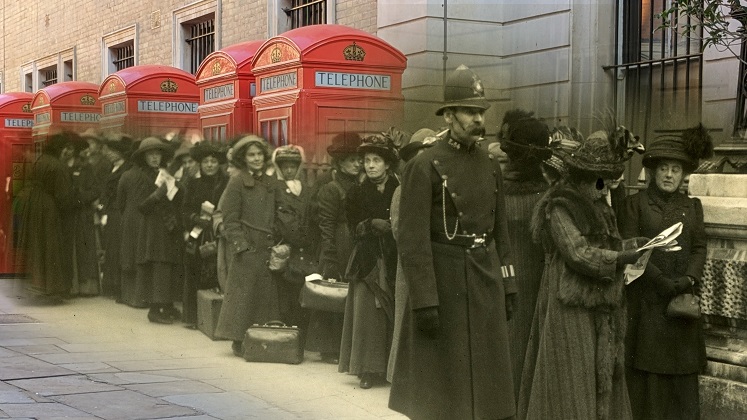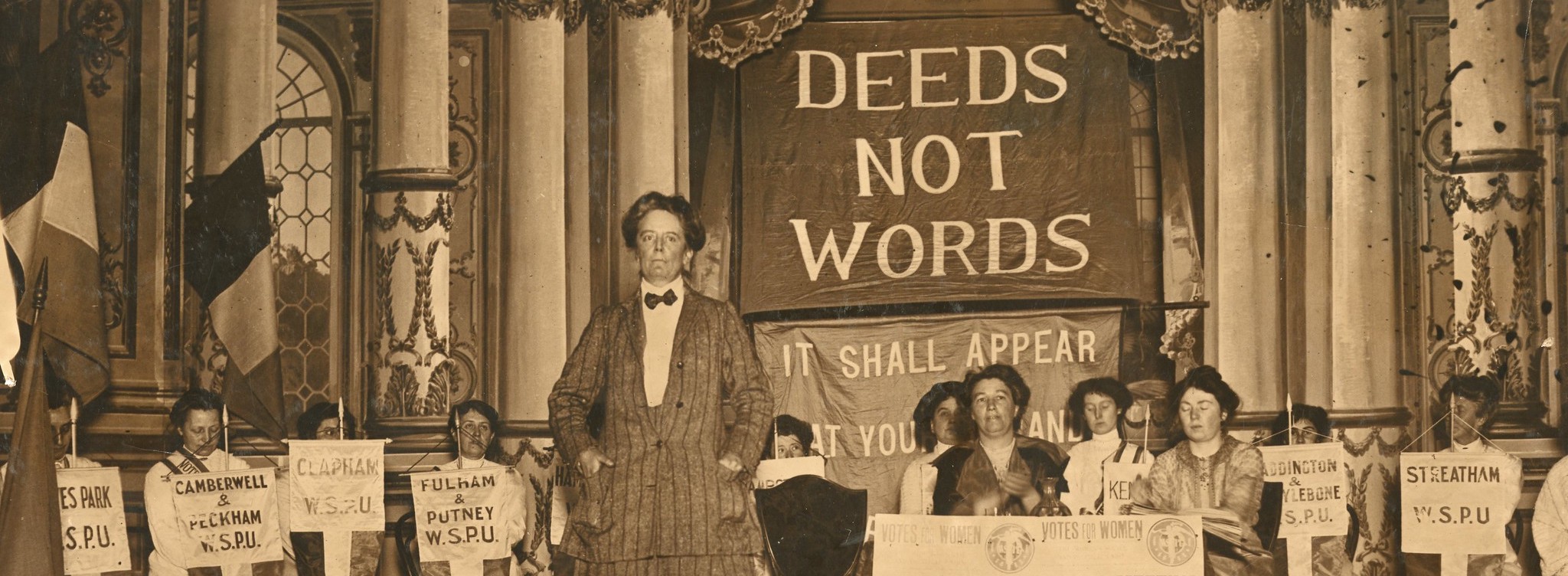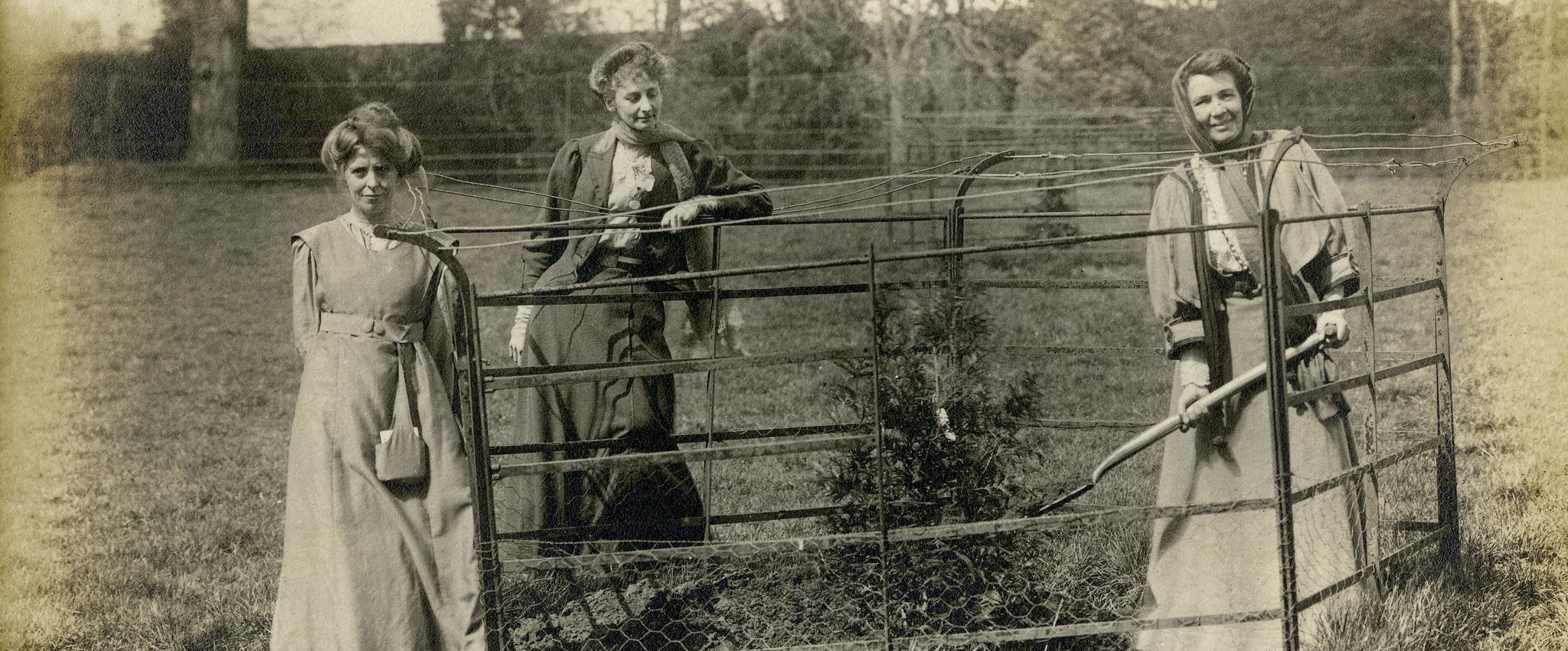On “Suffrage Saturday” in 1908, 10,000 women led by Millicent Fawcett’s National Union for Women’s Suffrage Societies marched through central London, demonstrating the volume of women that supported their cause.

The NUWSS was a suffragist group that aimed to change the law peacefully. In June 1908, energised by a Liberal government, women marched from central London to the Albert Hall to raise awareness of their fight for suffrage and to show the vast numbers of women who formed their movement.
Women marched in groups according to their profession, political allegiances and organisational membership. Each group had banners designed by the Artists’ Suffrage League, which female Arts and Crafts artist Mary Lowndes had founded.
While we mean to do our best, it is a little difficult to get Mr Asquith to see or hear anything we do. We wonder whether he will notice our procession on June 13th, 10,000 strong with 60 big banners and 700 small ones.
Jus Suffragii, June 1908
The impact of the procession, or Suffrage Saturday as it was also called, was to show the number of women who supported suffrage. A review of the event in the suffrage newspaper Women’s Franchise pointed out that a cabinet minister had said that women needed to show themselves in their masses to demonstrate to the government that this was a right that women both needed and wanted.
What went the world to see? Banners shaken in the wind, carried by stalwarts, and followed by those whose hearts were undaunted and who find increasing strength for the contest which now must be fought to the finish.
Women’s Franchise, 25 June 1908
Despite these demonstrations, The Liberal government under Asquith did not bear fruit for the equal suffrage campaign. While Conciliation Bills were discussed in Parliament, both members of the Conservative and Liberal parties voted them down. These bills were also controversial in women’s circles because they only intended to enfranchise small numbers of wealthy women. However they were seen as a hopeful first step on the path towards equal suffrage and thus were supported by women’s suffrage groups.





